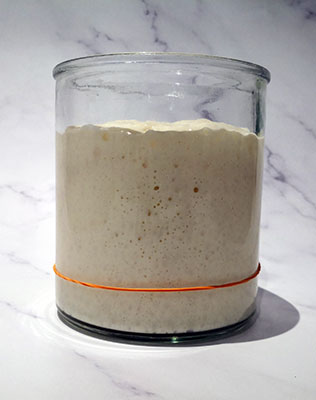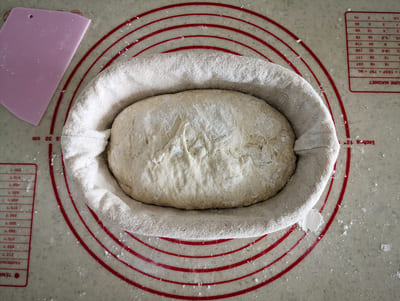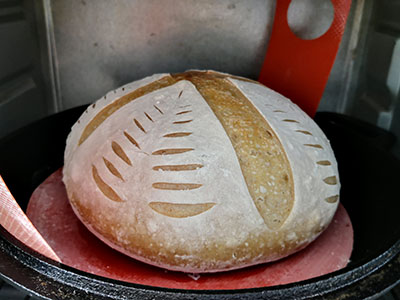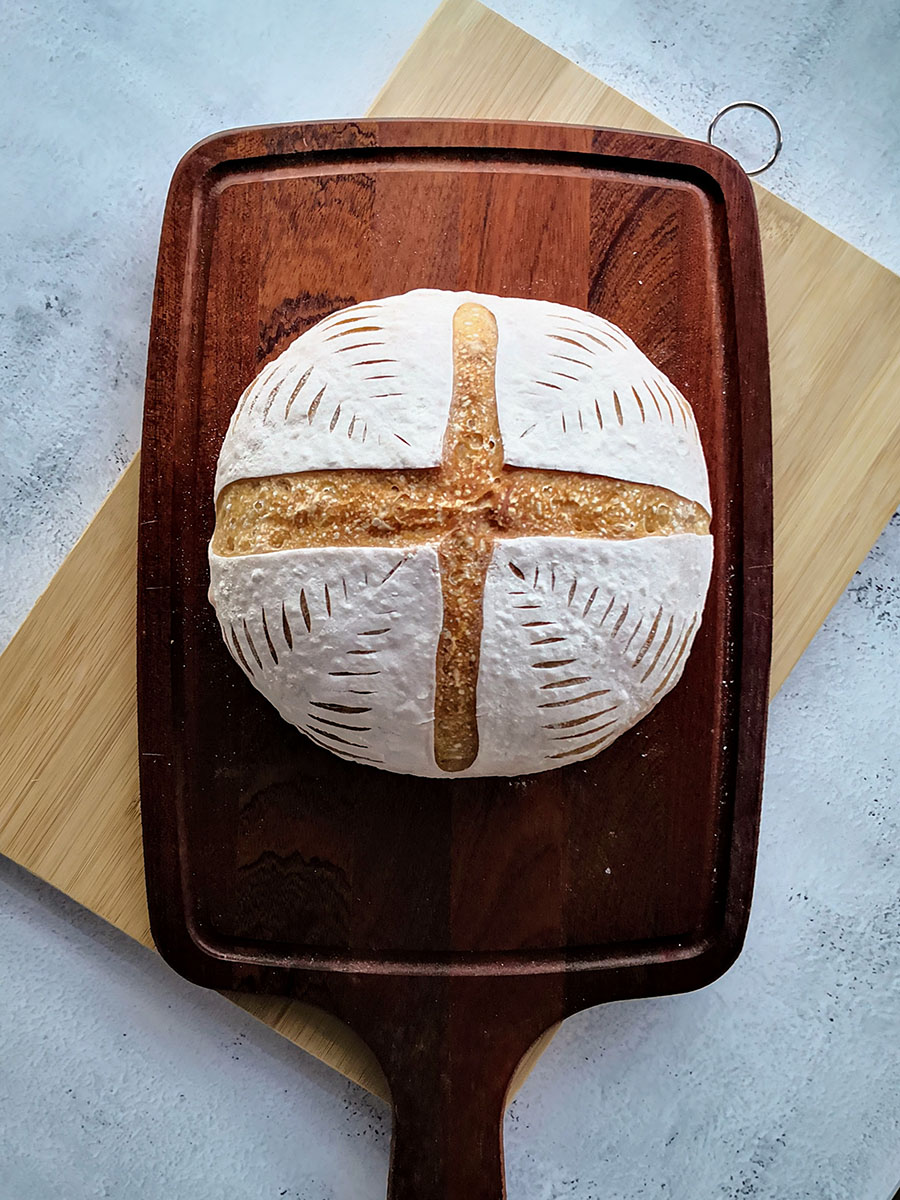A step-by-step guide to making sourdough bread


Overview of the process
Hello! I am so excited to share my step-by-step guide to get you started on your sourdough baking journey. In order to start, you will need a sourdough starter. If you don’t have one, one easy method is to reach out on social media and ask around as you may find someone nearby you will share some with you or purchase one online. Alternatively, you can also make one from scratch. It takes about 7 days to create one and you can refer to the Sourdough Starter Guide for more details.
The below describes in the process on how to make a simple sourdough bread. It starts with preparing the levain. Once the levain has peaked, it is time to mix the dough and let it bulk ferment with a series of stretch and folds. Next, shape the dough and place it in a banneton basket or bowl to give some structure to rise and place it in the fridge for final proofing. Then, remove the dough from the fridge and score it with a bread lame before placing it in the oven for baking. Once the bread is fully baked, remove the bread from the oven and let it cool on a wire rack before serving.
Making sourdough bread is something you have to learn by doing. You’re not going to make good bread by reading or watching videos. You have to actually roll up your sleeves and work the dough with your hands. I would suggest you to try this recipe multiple times, and not give up after one or two tries if you did not get the results you are hoping for, as baking bread takes practice. Remember to take notes of the process, timing and dough temperature. Learn to work with the ingredients and most importantly, enjoy the journey! Please refer to Sourdough Baking for more in depth details.
- Digital Weighing Scale
- Digital Thermometer
- Dough scraper
- Bulk Fermentation Container
- Dutch Oven
- Mixing bowl
- Bread Lame / Sharp Knife
- Banneton basket / Big Round Bowl
How to make Sourdough Bread?
- 300g Bread Flour
- 60g Levain
- 195g Water
- 6g Sea Salt
Step 1: Prepare levain
In order to make good sourdough bread, you must first ensure your starter is healthy in order to get a good rise and flavour development. How? By feeding it regularly and getting to know the starter, how long it takes to peak, how it looks at “peak”. In a small container, mix the liquid starter and use it at peak. It works best when the starter is thick in consistency and rises at least 2 times or more.
The most common ratio used to prepare a levain is 1:1:1 ratio. That means, equal amounts of starter, water and flour to make up 60g of levain. Prepare the levain by mixing 30g starter, 30g water and 30g flour. The remaining 30g unused portion, aka starter, will be kept for future use.

Step 2: Mix the dough

In a large bowl, combine the levain and water before adding the flour and salt. Mix everything together until no dry flour bits remain. It will look like a sticky, shaggy dough. Let the dough rest for 20 minutes.

After 20 minutes, knead the dough into a round ball and transfer the dough back into the bowl. Cover and let it rest for 20 minutes.
Step 3: Bulk Fermentation
Over the next few hours, perform 3-4 sets of stretch and folds to strengthen the dough at 20-30 minutes timed intervals. With a dampened hand, grab the outer edge of the dough, carefully pull to stretch it out a little, and fold it in toward the center. Continue grabbing, pulling, and folding the dough until you’ve gone all the way around, about 3-4 times, more if needed. Flip the dough over, round the dough into a ball and let it rest before repeating the same process.

Step 4: Preshape
At the end of bulk fermentation, the dough should have risen 20-30%. It will be bubbly, smooth and elastic. Turn the dough into a lightly flour surface and gently shape the dough into a boule or batard shape. Let the dough rest for 20 minutes before performing final shaping.

Step 5: Final Shape
Once the dough has rested and relaxed, it is time to do the final shaping before placing the dough seam side up into a proofing bowl (like a banneton basket or round container) sprinkled with rice flour.

Step 6: Final Proofing
Cover the banneton basket with a cloth or a plastic bag and seal it shut with a rubber band. Place the basket in the refrigerator and let it proof overnight.
Step 7A: Score
The next day, preheat the Dutch oven to 220°C for 30 minutes.
While the oven is preheating, remove the dough from the refrigerator and turnout the dough onto a piece of parchment paper or bread sling. Using a bread lame, sharp knife or blade, perform two deep slashes across the middle of the bread. You can leave it as it is or perform shallow cuts like some decorative leaf slashes.
Step 7B: Bake

Using oven gloves, carefully remove the lid of the hot dutch oven and place the dough into the dutch oven. Bake the dough in Dutch oven with a lid at 220°C for 25 minutes. After 25 minutes, remove the lid and bake at 200°C for another 10-15 minutes, or until internal temperature reaches 96-99°C.
Step 8: Cooling and Storage
Remove the bread from the oven and transfer the bread to a wire rack and let it cool completely for about 3 hours to 35-38°C before cutting into it. Cutting into a warm bread may result in a gummy and sticky bread.
Store the bread at room temperature for about 2-3 days using a cotton bread bag or wrap in a large tea towel to keep the moisture in or keep it in an airtight container. For longer term storage, store the bread in the freezer. Slice up the bread and individually wrap it in parchment paper or beeswax wrap before placing it in a ziplock bag.
Note: DO NOT store the bread in the fridge as it will cause the bread to stale faster.

